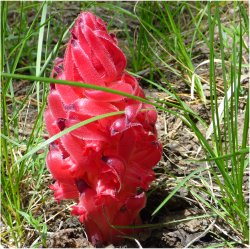
Before its opening as a public park in 1969, this area was part of the 4,000-acre Winters Ranch, known in the second half of the 19th century for its thoroughbred horses [1]. Today, this area is a popular getaway for relaxation, nature and geology studies, canyon and mountain hiking as well as equestrian uses [2]. The park landscape features sagebrush, bitterbrush, manzanitas and Jeffrey pines thriving in these eastside Sierra Nevada foothills—situated in the rain but not in the wind shadow of Slide Mountain. 

Hiking Ophir Creek Trail gives the opportunity to browse the landscape for evidence of the catastrophic 1983 slide, in particular, and of restless erosion processes in general. About one hundred years earlier, Mark Twain described the potential occurrence of land slides in the Carson Range in his fictionalized account Roughing It: “The mountains are very high and steep about Carson, Eagle and Washoe Valleys—very high and very steep, and so when the snow gets to melting off fast in the Spring and the warm surface-earth begins to moisten and soften, the disastrous land-slides commence. The reader cannot know what a land-slide is, unless he has lived in that country and seen the whole side of a mountain taken off some fine morning and deposited down in the valley, leaving a vast, treeless, unsightly scar upon the mountain's front to keep the circumstances fresh in his memory all the years he may go on living within seventy miles of that place.” Mark Twain, 1872 [5]. Now the reader knows! Note that Mike White also cited this passage in his Reno-Tahoe hiking guide [2]. Verbal records from Paiute tribes and reports by white settlers indicate that slides and floodings thread the natural history of appropiately named Slide Mountain [4]. An interplay of seismic activity and weather conditions keeps the mountain on the move. 
Nodding cluster of urn-shaped
bells Getting to Davis Creek Park The park is located about half-way between Reno and Carson City. Its entrance is located west of Highway 395. From Old US Hwy 395 (Route 429), turn west into Davis Creek Road, which ends inside the park. Currently, a new section of Highway 395 between South Reno and here is under construction. When finished, there should be an exit to Davis Creek Park and nearby Bowers Mansion. Nearby trails and places of interest |
||||||||||
References and more to explore
|
||||||||||
Related pages and further information
|
|
Tweet
__ __ 
__ 
|
|
|
|

Trailing Ahead |
| Video Maker |

Custom Search
|